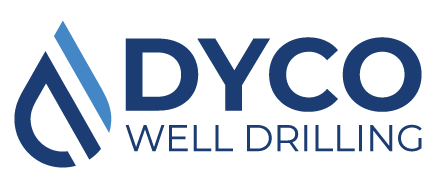If you’re in the drilling business, you know that your pump is the heart of your operation. Without it, you wouldn’t be able to extract valuable resources from the earth. That’s why it’s essential to keep your pump in tip-top condition with regular maintenance. Neglecting your pump’s maintenance can lead to costly breakdowns, lost productivity, and even safety hazards. In this article, we’ll explore the importance of regular pump maintenance for your drilling solution. We’ll dive into the key signs that your pump needs attention, the benefits of preventative maintenance, and some tips for keeping your pump running smoothly. By the end of this article, you’ll have a better understanding of why pump maintenance is crucial for the success of your drilling operation. So, let’s get started!
Importance of Regular Pump Maintenance
Pumps are a critical component in drilling solutions, and they play a significant role in the extraction process. It’s essential to ensure that your pump is functioning efficiently as it directly affects the productivity of your drilling operation. Regular maintenance guarantees that your pump is in good working condition, reducing the risk of costly breakdowns and downtime. It also ensures the safety of your workers as a malfunctioning pump can lead to accidents in the workplace.
Regular maintenance is not only essential for the longevity of your pump, but it also helps you save on costs in the long run. Regular maintenance is less expensive than repairing or replacing a damaged pump. Additionally, a well-maintained pump consumes less power, reducing your electricity bills.
The importance of regular pump maintenance cannot be overstated. It is crucial for the success of your drilling operation, and it helps you avoid costly breakdowns, lost productivity, and safety hazards. Regular maintenance also saves you money in the long run and ensures optimal pump performance.
Benefits of Regular Pump Maintenance
Regular pump maintenance offers many benefits, including improving the pump’s efficiency, reducing downtime, and prolonging the pump’s lifespan. When your pump is well-maintained, it operates efficiently, reducing energy consumption and costs. It also reduces the risk of unplanned downtime, which can be costly, as it halts operations, leading to lost productivity and revenue.
Regular maintenance also helps prolong the lifespan of your pump, saving you money on costly repairs and replacements. It also ensures that your pump operates safely, reducing the risk of accidents in the workplace.
In addition to these benefits, regular pump maintenance also helps you comply with regulatory requirements. Compliance with regulations is essential for the success of your drilling operation, and regular maintenance helps you avoid penalties and fines.
Regular pump maintenance offers many benefits, including improved efficiency, reduced downtime, prolonged lifespan, and compliance with regulatory requirements.
Signs Your Pump Needs Maintenance
It’s essential to be aware of the signs that your pump needs maintenance to prevent costly breakdowns and accidents. Some of the signs that your pump needs maintenance include strange noises during operation, vibrations, leaks, and reduced performance.
Strange noises during pump operation indicate that there may be a problem with the bearings, impellers, or other pump components. Vibrations are also a sign that there may be a problem with the pump components, and they can cause damage to the pump if not addressed promptly.
Leaks are another sign that your pump needs maintenance. Leaks can cause damage to the pump’s components, and they can also pose a safety hazard to your workers. Reduced performance is also a sign that your pump needs maintenance. A pump that is not performing optimally consumes more energy and increases your operation costs.
Regular inspection of your pump can help you identify these signs early, preventing costly breakdowns and accidents.
Types of Pump Maintenance
There are different types of pump maintenance, including preventative maintenance, corrective maintenance, and predictive maintenance.
Preventative maintenance involves regular maintenance on the pump to prevent problems from occurring. It includes tasks such as replacing worn-out parts, lubrication of moving parts, and cleaning the pump’s components. Preventative maintenance ensures that your pump operates efficiently and reduces the risk of costly breakdowns.
Corrective maintenance involves fixing a problem that has already occurred. It’s often more costly than preventative maintenance and can lead to downtime and lost productivity.
Predictive maintenance involves monitoring the pump’s performance to identify potential problems before they occur. It includes tasks such as vibration analysis, oil analysis, and thermography. Predictive maintenance helps you avoid costly breakdowns and prolongs the pump’s lifespan.
It’s essential to incorporate these types of maintenance in your pump maintenance plan to ensure that your pump operates efficiently and prolongs its lifespan.
Steps for Conducting Regular Pump Maintenance
Conducting regular pump maintenance involves several steps that help keep your pump in good working condition. These steps include inspection, cleaning, lubrication, and replacing worn-out parts.
Inspection involves checking the pump’s components for damage or wear. It’s essential to conduct regular inspections to identify potential problems early and prevent costly breakdowns.
Cleaning involves removing debris and dirt from the pump’s components, ensuring that it operates efficiently. Lubrication involves adding lubricants to moving parts to reduce friction, wear, and tear.
Replacing worn-out parts is essential to ensure that your pump operates efficiently. Worn-out parts can cause damage to other pump components and lead to costly breakdowns.
It’s essential to conduct regular pump maintenance to keep your pump in good working condition and avoid costly breakdowns and repairs.
Common Pump Maintenance Mistakes to Avoid
Some common pump maintenance mistakes can harm the pump’s components and lead to costly repairs and replacements. These mistakes include over-lubrication, improper installation, and using incorrect parts.
Over-lubrication can cause damage to the pump’s components and lead to costly repairs. Improper installation can cause misalignment, leading to vibrations and damage to the pump’s components. Using incorrect parts can also cause damage to the pump’s components and lead to costly repairs.
It’s essential to avoid these mistakes to keep your pump in good working condition and prolong its lifespan.
Choosing the Right Pump Maintenance Provider
Choosing the right pump maintenance provider is essential to ensure that your pump receives high-quality maintenance services. It’s essential to choose a provider with experience in pump maintenance, as they have the skills and knowledge required to maintain your pump efficiently.
It’s also essential to choose a provider with a good reputation in the industry. A provider with a good reputation is likely to provide high-quality services and meet your pump maintenance needs.
Additionally, it’s essential to choose a provider with competitive pricing. Pump maintenance costs can add up quickly, and it’s essential to choose a provider that offers affordable services.
Choosing the right pump maintenance provider is crucial to ensuring that your pump receives high-quality maintenance services and operates efficiently.
Pump Maintenance Cost Considerations
Pump maintenance costs can vary depending on several factors, including the pump’s age, type, and condition. Older pumps require more maintenance, and maintenance costs increase as the pump ages.
The type of pump also affects maintenance costs. Different types of pumps require different maintenance procedures, and some pumps are more expensive to maintain than others.
The pump’s condition also affects maintenance costs. A pump that is in poor condition requires more maintenance than a pump that is in good condition.
It’s essential to consider these factors when budgeting for pump maintenance costs and choosing a pump maintenance provider.
Conclusion and Final Thoughts
Regular pump maintenance is essential for the success of your drilling operation. It ensures that your pump operates efficiently, reduces downtime, and prolongs the pump’s lifespan. Regular maintenance also helps you comply with regulatory requirements and saves you money in the long run.
It’s essential to be aware of the signs that your pump needs maintenance, and to conduct regular inspections, cleaning, lubrication, and replacing worn-out parts. It’s also essential to avoid common pump maintenance mistakes and to choose the right pump maintenance provider.
Finally, it’s essential to consider pump maintenance costs and budget for them accordingly. Regular pump maintenance is an investment that pays off in the long run, ensuring that your drilling operation runs smoothly and efficiently.

